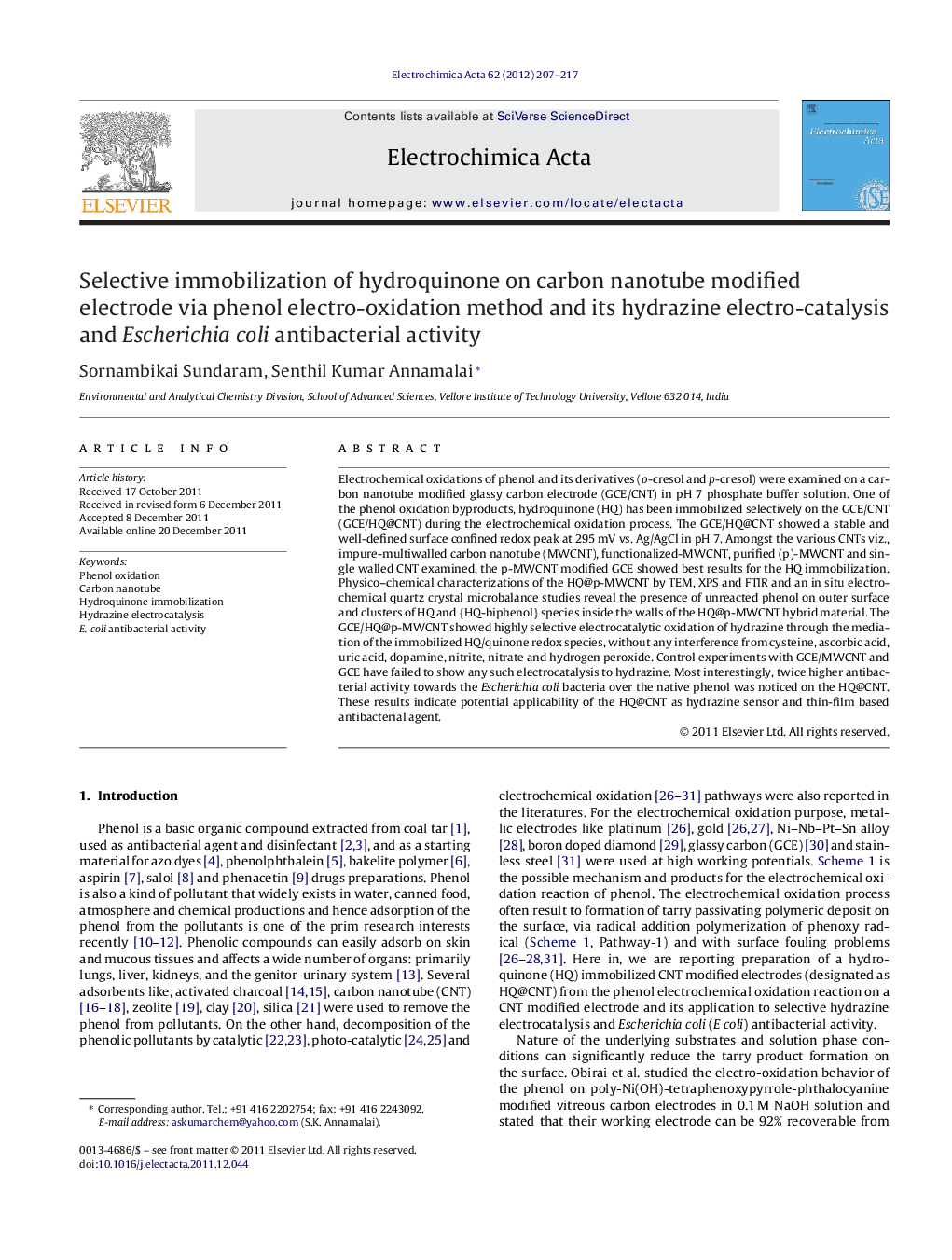| کد مقاله | کد نشریه | سال انتشار | مقاله انگلیسی | نسخه تمام متن |
|---|---|---|---|---|
| 189045 | 459672 | 2012 | 11 صفحه PDF | دانلود رایگان |

Electrochemical oxidations of phenol and its derivatives (o-cresol and p-cresol) were examined on a carbon nanotube modified glassy carbon electrode (GCE/CNT) in pH 7 phosphate buffer solution. One of the phenol oxidation byproducts, hydroquinone (HQ) has been immobilized selectively on the GCE/CNT (GCE/HQ@CNT) during the electrochemical oxidation process. The GCE/HQ@CNT showed a stable and well-defined surface confined redox peak at 295 mV vs. Ag/AgCl in pH 7. Amongst the various CNTs viz., impure-multiwalled carbon nanotube (MWCNT), functionalized-MWCNT, purified (p)-MWCNT and single walled CNT examined, the p-MWCNT modified GCE showed best results for the HQ immobilization. Physico–chemical characterizations of the HQ@p-MWCNT by TEM, XPS and FTIR and an in situ electrochemical quartz crystal microbalance studies reveal the presence of unreacted phenol on outer surface and clusters of HQ and {HQ-biphenol} species inside the walls of the HQ@p-MWCNT hybrid material. The GCE/HQ@p-MWCNT showed highly selective electrocatalytic oxidation of hydrazine through the mediation of the immobilized HQ/quinone redox species, without any interference from cysteine, ascorbic acid, uric acid, dopamine, nitrite, nitrate and hydrogen peroxide. Control experiments with GCE/MWCNT and GCE have failed to show any such electrocatalysis to hydrazine. Most interestingly, twice higher antibacterial activity towards the Escherichia coli bacteria over the native phenol was noticed on the HQ@CNT. These results indicate potential applicability of the HQ@CNT as hydrazine sensor and thin-film based antibacterial agent.
Figure optionsDownload as PowerPoint slideHighlights
► Selective and indirect immobilization of hydroquinone (HQ) on MWCNT via phenol oxidation.
► HQ@MWCNT characterized by in situ CV-EQCM, TEM, FTIR and XPS.
► Highly selective electrocatalytic oxidation of hydrazine on HQ@MWCNT electrode.
► HQ@MWCNT has twice higher E. coli antibacterial activity over the phenol and MWCNT.
Journal: Electrochimica Acta - Volume 62, 15 February 2012, Pages 207–217